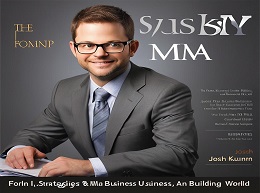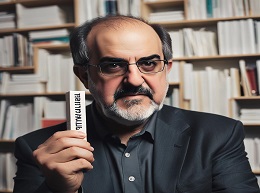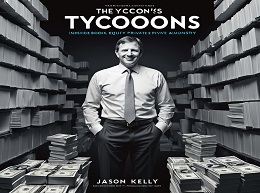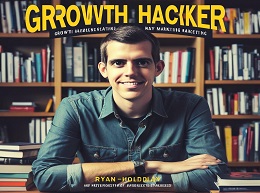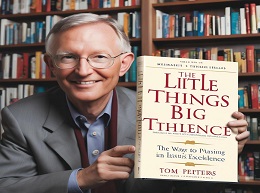The End of Competitive Advantage: How to Keep Your Strategy Moving as Fast as Your Business
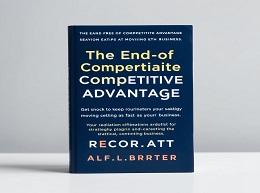
The End of Competitive Advantage: Adapting Strategies for Fast-Moving Business
"The End of Competitive Advantage: How to Keep Your Strategy Moving as Fast as Your Business" by Rita Gunther McGrath challenges traditional notions of sustainable competitive advantage. In today's rapidly evolving business landscape, McGrath argues that companies need to adopt a dynamic approach to strategy, embracing continuous change and innovation. This review explores the key concepts of the book, offering detailed analysis and engaging examples to provide a comprehensive understanding of McGrath’s insights.
Challenging Traditional Competitive Advantage
McGrath begins by questioning the long-held belief that sustainable competitive advantage is the cornerstone of business success. She introduces the concept of transient advantage, where competitive edges are temporary and must be continuously renewed.
Example: Kodak vs. Fujifilm
Kodak’s decline is a prime example of a company clinging to outdated notions of competitive advantage. In contrast, Fujifilm adapted by diversifying into new markets like healthcare and digital imaging, illustrating the importance of agility and innovation.
Embracing Continuous Change
In a world where industries are rapidly transforming, businesses must be prepared to pivot and adapt. McGrath emphasizes the need for a mindset that welcomes change and views it as an opportunity for growth.
Practical Insight: Netflix's Evolution
Netflix exemplifies a company that has embraced continuous change. Transitioning from DVD rentals to streaming services and then into original content production, Netflix continuously adapts its strategy to stay ahead in the entertainment industry.
Phase 1: Launch
The first phase involves identifying opportunities and launching initiatives quickly. Speed is crucial to gain an initial foothold in the market.
Example: Tesla's Early Moves
Tesla’s rapid launch of its electric vehicles, despite numerous challenges, allowed it to establish itself as a leader in the electric car market. Speed and innovation were key to Tesla's early success.
Phase 2: Ramp Up
Once the initiative is launched, the focus shifts to scaling operations and capturing market share. This phase requires robust execution and efficient scaling strategies.
Practical Insight: Uber's Expansion
Uber’s aggressive ramp-up strategy involved expanding quickly into new markets worldwide. By scaling operations efficiently, Uber captured significant market share in the ride-sharing industry.
Phase 3: Exploit
In this phase, the goal is to maximize returns from the established market position. Companies should focus on optimizing operations and increasing profitability.
Example: Apple's iPhone
Apple’s exploitation of the iPhone’s success involved refining its product, expanding its ecosystem, and increasing profitability through premium pricing and brand loyalty.
Phase 4: Reconfigure
As the market evolves, companies must reconfigure their strategies to maintain relevance. This involves innovation, diversifying offerings, and entering new markets.
Practical Insight: IBM's Transformation
IBM’s shift from hardware to services and cloud computing is a prime example of reconfiguring a business strategy to adapt to changing market dynamics. This transformation allowed IBM to stay relevant in the tech industry.
Phase 5: Disengage
The final phase involves disengaging from declining initiatives and reallocating resources to new opportunities. This phase requires a clear exit strategy to minimize losses and maximize resource efficiency.
Example: GE's Portfolio Management
General Electric’s strategic disengagement from underperforming divisions, such as its exit from the financial services sector, allowed it to refocus on core industrial strengths and new growth areas.
Creating a Culture of Innovation
McGrath emphasizes the importance of fostering a culture that encourages innovation and risk-taking. Companies must create environments where employees feel empowered to experiment and contribute ideas.
Practical Insight: Google's 20% Time
Google’s policy of allowing employees to spend 20% of their time on passion projects has led to significant innovations, including Gmail and Google News. This culture of innovation is crucial for maintaining a competitive edge.
Developing Dynamic Capabilities
Organizations need dynamic capabilities to sense and seize opportunities quickly. This involves developing the ability to reconfigure resources and processes rapidly.
Example: Zara's Fast Fashion
Zara’s fast fashion model relies on its dynamic capabilities to quickly sense trends and respond with new products. This agility has enabled Zara to remain a leader in the fashion industry.
Leadership in a Fast-Moving World
Effective leadership is critical in navigating transient advantages. Leaders must be visionary, adaptable, and capable of making quick decisions in uncertain environments.
Practical Insight: Jeff Bezos and Amazon
Jeff Bezos’ leadership at Amazon, characterized by a willingness to take risks and a focus on long-term vision, has driven the company’s continuous innovation and adaptation across various industries.
Building a Flexible Organizational Structure
McGrath highlights the need for flexible organizational structures that can quickly adapt to changing circumstances. This involves decentralizing decision-making and fostering cross-functional collaboration.
Example: Spotify's Squad Model
Spotify’s squad model, which organizes teams into small, cross-functional units, enables quick decision-making and agility. This structure has been instrumental in Spotify’s ability to innovate rapidly in the music streaming industry.
Case Study: Microsoft’s Resurgence
Under Satya Nadella’s leadership, Microsoft underwent a significant transformation, embracing cloud computing and AI. This shift from a product-centric to a service-oriented approach illustrates the power of transient advantage.
Practical Insight: Azure’s Success
Microsoft Azure’s rapid growth highlights the company’s ability to launch, ramp up, and exploit new opportunities effectively. This strategic pivot has positioned Microsoft as a leader in cloud services.
Lessons for Aspiring Entrepreneurs and Business Leaders
McGrath’s insights are valuable for entrepreneurs and business leaders seeking to thrive in a fast-paced environment. The key takeaway is the importance of agility, continuous innovation, and a willingness to reconfigure strategies to stay ahead.
Thriving in a World of Transient Advantage
"The End of Competitive Advantage" by Rita Gunther McGrath offers a compelling framework for navigating today’s fast-moving business landscape. By embracing the concept of transient advantage and adopting a dynamic approach to strategy, companies can thrive in an era of continuous change. Whether you are a startup founder, business leader, or aspiring entrepreneur, McGrath’s insights provide a roadmap for achieving sustained success in a rapidly evolving world.
